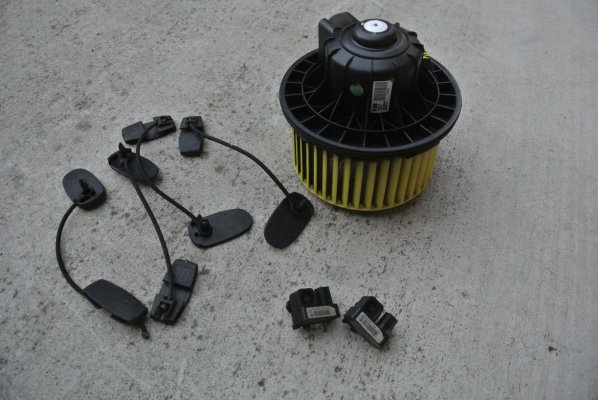Those instructions make logical sense to me, though the factory dual battery setups I have seen in the PPV/SSV section are not wire as such.
The second battery ground goes straight to alternator bracket. I suspect GM didn't put too much thought/care into it.
Regarding the RVC sensor, I don't believe it to be used for anything other than keeping track of amps so it can maintain the battery down to minimal safe levels / minimal charge cycles? Or is there something else it helps with?
I agree with the instructions above for the most part, but I don't like the idea of moving the ground off the block to the alt bolt. pull the alt and bracket and clean both and add some no-ox for a good connection definitely, but moving it I don't like. the starter is the most high current drain on your truck and needs a solid ground to the block, but they're somehow more worried about the alt than the starter? nah.
I also don't like adding random ground wires all around cars, ground loops are a thing and a lot of sensors use as little as 5v and o2 0-1v. a few random volt offset isn't a great thing. it's much better to replace or upgrade the factory locations. I also have had very good luck with getting the cooling fan load off the factory wiring and one the alt lug. directly. once you remove that 30-50amps off the factory wiring you get less voltage drop on everything plus higher voltage to the fans, which DC motors usually like. it all works much better. depending on where it's located, I do sometimes move the fans ground to the block of its on the body, but I don't add an extra one, just move it and unload the factory block to frame.
back years and years ago when innovate wideband released the first affordable ish wideband o2 sensor kit. the LM-1. i got one and could never get it to read right. back then it needed to send 1v-2v into my obd1 software for logging. 1v being 10:1 and 2v being 20:1 airfuel is what the logging could understand. so it needed to be within a tenth or so but mainly it needed to be consistent, you could offset the math formula a few tenths either way. innovate message board was very active back then with guys having issues. the amount of tuning knowledge and theory lost when they purged
that old board still makes me sad. the engineers themselves would pop in and help give tips, 99% of the time is was bad grounds, so when I installed mine I went the other way, I added grounds. from motor to body, from body to ground point of the wideband controller and to the ecm case. I was young and thought it would be solid, it was not. it was all over the map. I finally posted pics of my install with questions as to why I got some weird reading. most people said it was a great install, one of the engineers finally posted up that it was a wreak and that auto manufacturs spend tons of time routing harnesses and ground points to avoid ground loops, (it's a big deal on circuit board layout too) went into a what ground loops are, which I never fully understood but I rewired everything as he said, and bam. it all is worked correctly. that wiring was to simple run all ground to the same oem ground point. on that car it was back of the head. pulled it, cleaned it up, put ring terminals on all the ground wires and run them to one oem point. seemed so simple after he said it.
I believe the sensor is very useful for the charging routine, it needs to measure the starting current draw and time. then put that much back in to the battery relatively quickly to keep a lead acid happy. after that the alt is running and it can just go off voltage and calculate Temps to maintain them.
just my 2 cents on how I try to wire things.

